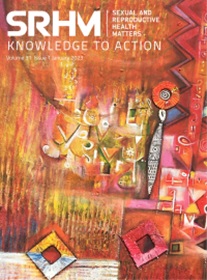捐赠者:捐赠者概念中的奇怪联系
IF 3.3
2区 医学
Q1 PUBLIC, ENVIRONMENTAL & OCCUPATIONAL HEALTH
引用次数: 0
摘要
这是研究生殖与健康领域的一本重要书籍,也是对废除配子捐献者匿名的政策转变后的社会变化的及时回应。许多学者一直在研究相关问题,主要是与捐赠者和接受者有关的问题,但对捐赠者及其家人的关注较少。Petra Nordqvist和Leah Gilman从关系的角度研究配子捐献者的经历。捐赠者:捐赠者概念中的好奇联系旨在探索在这一特定历史时刻,法律、社会、文化和技术背景的变化对已经或正在考虑成为配子(精子或卵子)捐赠者的人的影响,以及他们如何理解与捐赠者所生子女和家庭的联系。从2005年开始,英国从捐赠者匿名向可追踪的转变,标志着捐赠精子和卵子的人的身份从保密向公开的巨大转变。这种监管变化是对捐赠者倡导的开放运动的回应,以及他们在年满18岁后联系捐赠者的权利(第16页)。它产生了一个新的生殖医学临床实践方案,并反映了更广泛的社会文化变化。通过描述捐赠者的生活经历,捐赠者解释了随着同意捐赠者政策的颁布,以及互联网和社交媒体进行非正式捐赠的新兴用途,“捐赠者概念实践和文化的更广泛转变”(第211页)。因此,捐赠者既要检查在诊所参与捐赠的人,也要检查那些已经认识受赠父母的非正式捐赠者。通过观察各种捐赠,捐赠者通过调查捐赠者的经历、他们的关系和个人生活,了解人们对捐赠的不同看法。随着生殖配子捐赠在英国和世界范围内的扩大,越来越多的研究兴趣围绕接受者展开,包括接受者的父母和捐赠者怀上的孩子。然而,缺乏关于捐赠者家庭及其关系的学术文献,尤其是通过定性方法进行的研究,这些研究可以更深入地了解捐赠决策如何影响捐赠者的生活以及他们与哪些人有共同关系。在方法论上,Petra Nordqvist和Leah Gilman从关系的角度探讨配子捐献者的经历,并运用社会学中的个人生活方法,探讨社会政策如何影响人们对连通性的感知。捐赠者将配子捐赠视为实践和相关谈判的反映,也是对不断变化的社会和政治议程的回应。在引言中,作者从精子捐献者Zak的故事开始,提出了紧迫的问题:作为捐献者意味着什么?(第1页)这对捐赠者、他们的家人以及他们生活中的其他相关关系有何影响?(第2页)第一章首先描述了英国“身份释放政策”产生的法律变化的历史背景。这项研究是捐赠者所基于的,应用了定性社会学方法,对精子和卵子捐赠者、23名捐赠者亲属、,以及2017年至2021年帮助捐赠过程的医疗专业人员和顾问(第11页,第233页)。第2章通过默认地关注从采访中选出的10个故事,详细阐述了不同捐赠在匿名或公开生活经历方面的意义,而不是通常在诊所内定义并贴上捐赠者标签的静态类别。捐赠者建议用更动态的“途径”概念取代捐赠的类型:身份释放途径,即BOOKSHELF本文章由计算机程序翻译,如有差异,请以英文原文为准。
Donors: curious connections in donor conception
This is an important book in the field of studying reproduction and health, and a timely response to the social changes following the policy shift that abolished the anonymity of gamete donors. Many scholars have been looking at relevant issues, mostly in relation to donor-recipient people, yet less attention has been paid to donors and their families. Petra Nordqvist and Leah Gilman examine gamete donors’ experiences from a relational perspective. Donors: Curious Connections in Donor Conception aims to explore the effects of changes in the legal, social, cultural, and technological context at this specific historical moment on people who have been or are considering becoming gamete (sperm or ovum) donors and how they make sense of the connections with the donorconceived children and the families. The shift from donor anonymity to traceability in the UK, which began in 2005, signifies a great transition from secrecy to openness in terms of the identity of people who donate sperm and ova. This regulatory change is the response to donorconceived people’s campaign for openness and the right for them to contact donors after they reach the age of 18 (p. 16). It has resulted in a new protocol for clinical practice in reproductive medicine and reflects wider sociocultural changes. By depicting donors’ lived experiences, Donors explains “the broader shift in donor conception practices and cultures” as the consent donor policy enacted and, at the same time, the emerging use of the Internet and social media to perform informal donation (p. 211). Thus, Donors examins both people who participate in donations in clinics, and those who donate informally, who are already acquainted with recipient parents. By looking at various donations, Donors captures how people perceive donation differently through investigating donors’ experiences as well as their relationships and their personal lives. With the expansion of reproductive gamete donation in the UK and worldwide, increasing research interests have been addressed around recipients, including recipient parents and donor-conceived children. However, there is a shortage of scholarly literature on the donor families and their relationships, especially research conducted via qualitative approaches, which can give a more in-depth understanding of how donation decisions shape donors’ lives and those with whom they share connections. Methodologically, Petra Nordqvist and Leah Gilman explore gamete donors’ experiences from a relational perspective and employ the personal life approach in sociology, to explore how social policies impact on people’s perceptions of connectedness. Donors sees gamete donation as a reflection of practices and relatedness negotiations, as well as a response to shifting social and political agendas. In the Introduction, the authors begin with the story of a sperm donor, Zak, to bring out the pressing questions: What does it mean to be a donor? (p. 1) How does that affect the donor, and their families and other relevant relationships in their lives? (p. 2) Chapter 1 begins by describing the historical context of the legal changes in terms of the birth of “identity-release policies” in the UK. This research, on which Donors is based, applied qualitative sociological methods by conducting 52 interviews with both sperm and ovum donors, 23 donor relatives, and medical professionals and counsellors helping the donation process from 2017 to 2021 (p. 11, p. 233). By tacitly focusing on 10 stories selected from the interviews, Chapter 2 elaborates on the meanings of different donations in terms of anonymity or openness of identity from lived experiences, rather than static categories often defined inside clinics and labelled on the donors. Donors suggests replacing typologies of donations with a more dynamic concept of “pathways”: identity-release pathways, known BOOKSHELF
求助全文
通过发布文献求助,成功后即可免费获取论文全文。
去求助
来源期刊

Sexual and Reproductive Health Matters
Medicine-Obstetrics and Gynecology
CiteScore
4.00
自引率
8.30%
发文量
63
审稿时长
16 weeks
期刊介绍:
SRHM is a multidisciplinary journal, welcoming submissions from a wide range of disciplines, including the social sciences and humanities, behavioural science, public health, human rights and law. The journal welcomes a range of methodological approaches, including qualitative and quantitative analyses such as policy analysis; mixed methods approaches to public health and health systems research; economic, political and historical analysis; and epidemiological work with a focus on SRHR. Key topics addressed in SRHM include (but are not limited to) abortion, family planning, contraception, female genital mutilation, HIV and other STIs, human papillomavirus (HPV), maternal health, SRHR in humanitarian settings, gender-based and other forms of interpersonal violence, young people, gender, sexuality, sexual rights and sexual pleasure.
 求助内容:
求助内容: 应助结果提醒方式:
应助结果提醒方式:


